Recent Storm Damage Posts
3 Things FEMA Can Do for You After a Storm
4/2/2023 (Permalink)
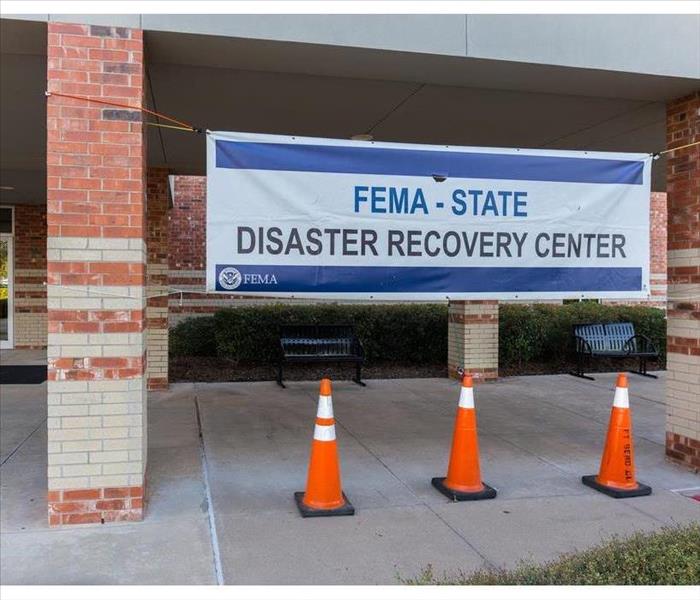 If you believe that you need additional assistance, then contacting FEMA is something to consider.
If you believe that you need additional assistance, then contacting FEMA is something to consider.
Three Things FEMA Can Do for You After a Storm
If your Chandler, AZ, home has been damaged in a storm, you might not know where to turn for help. In many cases, the Federal Emergency Management Agency can provide the assistance that you need. If you qualify, here are just a few things that you can expect FEMA to do for you during an emergency.
1. Inspect the Property
Sometimes, you may be required to provide information about the state of your home to FEMA. In this case, they will send an inspector to look over the property. The inspector will then take pictures and note all of the damaged areas and belongings, making sure to document the destroyed property in detail.
2. Provide Financial Assistance
Even if you file an insurance claim, you may still be eligible for additional assistance. This could cover a wide variety of expenses, including housing assistance such as home repairs done by an emergency restoration company, or rent payments for temporary housing if your home was severely damaged in the storm or flood. It may also cover other items like medical costs, transportation, childcare and funeral arrangements, among others.
3. Find Additional Services
In some cases, particularly if there has been extreme flooding or damage in your community, you may be eligible for additional services outside of financial assistance. If you are unable to find housing, you may be given a temporary housing unit. If you have lost your job as a result of the disaster, you may qualify for unemployment services and benefits. In order to address the emotional and psychological distress that is sometimes caused by a disaster, crisis counseling is offered as well.
When you have experienced a natural disaster, sometimes the help you receive from your insurance company is simply not enough. If you believe that you need additional assistance, then contacting FEMA is something to consider. They can help to address a wide variety of needs for you and your family.
What to Know About Storm Shutters
12/28/2022 (Permalink)
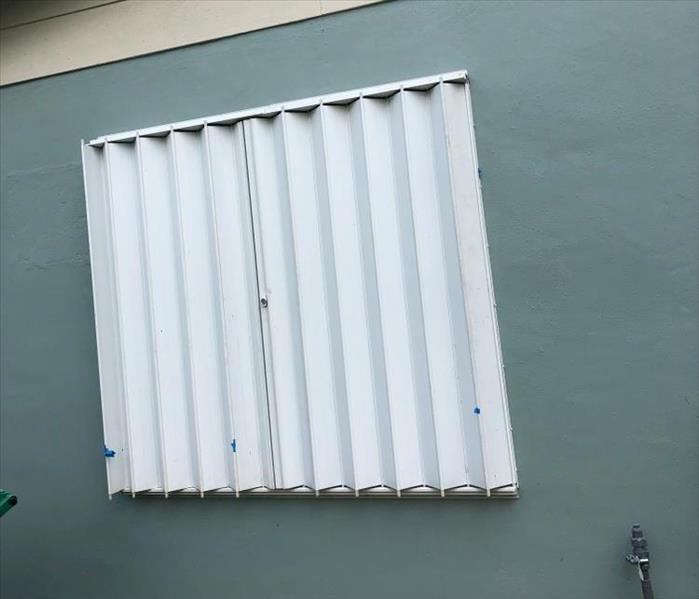 Storm shutters come in a variety of styles, types and materials.
Storm shutters come in a variety of styles, types and materials.
If your home in Chandler, AZ, experiences high winds on a regular basis then you may want to consider shutters for your home. Not only can these protect against wind and rain, but they may also help prevent storm damage to your windows. Here are a few things you may want to know.
There Are Several Types
Storm shutters come in a variety of styles, types and materials. Styles can include the following.
- Colonial
- Storm panel
- Roll down
- Accordion
- Bahama
The materials they are comprised of may include
- Polycarbonate
- Steel
- Aluminum
- Wood
They Can Function in Several Ways
Depending on the nature of the high winds in your area you may want to consider several different shutter styles. Accordion shutters unfold to cover the windows, while roll-down storm shutters pull down from above or up from below. Colonial and Bahama Styles unlocked from their position either to the side of the window or above it. They can then be bolted in place in the event of a storm.
They Can Help Prevent Storm Damage
Many storm damage restoration companies recommend protecting your windows in the event you know a storm is coming. Doing so can help stop debris from causing damage to the window, which can then lead to leaks and further water damage in your home. Shutter installation is one possible way to protect your windows.
If you're looking at shutters to protect your home from high winds then you may want to consider the shutter style and material you like best for your needs. Keep in mind that storm shutters can function in several ways from the ability to roll them down over your windows to unhinging them and bolting them in place in the event of a storm. They can also help protect your windows from getting hit by flying debris in the event of a severe storm. If you have any questions a professional may be able to help.
3 Tips for Sump Pump Maintenance
12/2/2022 (Permalink)
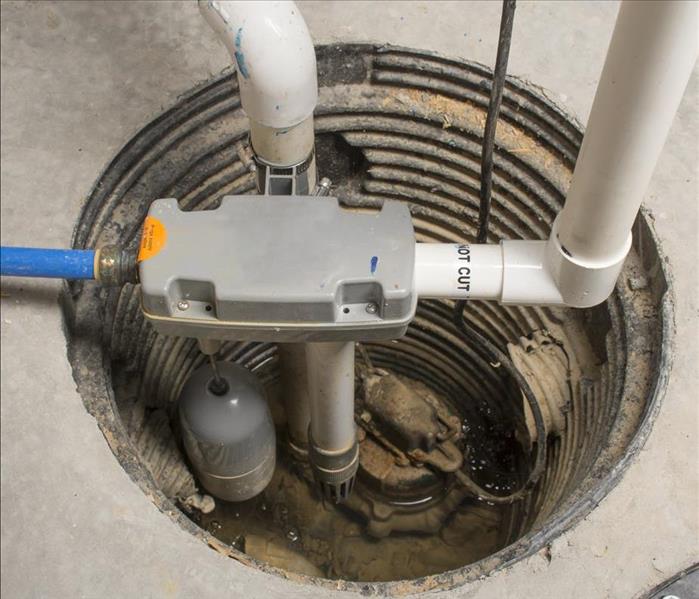 Keeping your pump clear of debris can also help prevent clogs that may damage the unit.
Keeping your pump clear of debris can also help prevent clogs that may damage the unit.
Sump Pump Maintenance
If you have a sump pump in your Chandler, AZ, home, then you may already know the dangers flooding can present to your property. Fortunately, performing regular maintenance on your pump can help it stay in working order, which in turn can help prevent water damage.
1. Always Follow the Manufacturer's Recommended Use Instructions
Many water damage restoration companies recommend the pumps as a flood prevention method. When performing pump maintenance, it's important to always follow your manufacturer's recommended instructions. This includes making sure the cord is in good repair, and that the unit is plugged into a ground fault circuit interrupter. This can help ensure your pump correctly performs the intended job for its lifespan.
2. Regularly Check For, and Clean Out Any Debris
Another important step for maintaining your sump pump is to ensure the pump, the vent, the discharge pipe, and its intake screen remain clear of debris. Common clogs can be comprised of dirt, gravel, leaves, sticks, and other materials that may have gotten into the water. A clogged unit often has to work harder to do its job and is at greater risk of malfunction.
3. Perform Routine Maintenance on Your Pump
Regularly looking over your pump for any maintenance needs can help you prevent larger problems such as clogs and unit malfunction. Take the time to inspect the cord, and clear away any debris that could be a problem. If you find your pump is malfunctioning it's best to call a professional to service the unit.
Remember, maintaining your sump pump can help prevent costly water damage to your home. Always follow the manufacturer's instructions on how to use, plug in and clean your pump. Keeping your pump clear of debris can also help prevent clogs that may damage the unit. It's important to check for these things on a regular basis. If you have any questions, a professional might be able to help.
What To Know About Mitigating Roof Damage
10/11/2022 (Permalink)
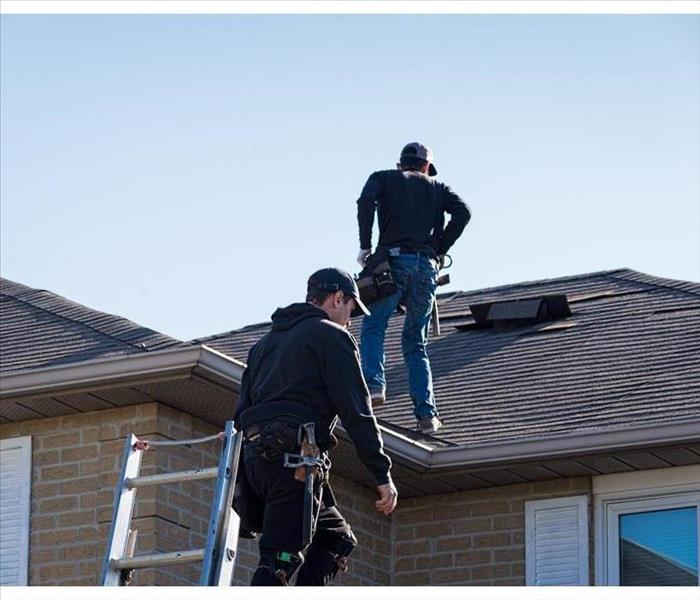 The roof should be inspected regularly.
The roof should be inspected regularly.
What You Need To Know To Prevent Roof Damage
When you have a Chandler, AZ, home roof damage from the weather may be something you’re concerned about. Fortunately, there are a few steps you can take to help mitigate this possibility. Here are a few things that many storm damage restoration professionals recommend to help protect your home.
1. It’s Best To Act Quickly if Damage is Found
Not all damage comes from hail or rain. Wind damage and extensive sun can also lead to some problems with your roof. Knowing what to look for can allow you to act quickly when signs of damage are found. Doing so may help mitigate long-term costs by preventing the damage from growing.
2. The Roof Should Be Inspected Regularly
Many experts recommend looking over your home for roof damage at least twice a year. Doing so may help you spot potential issues that need to be taken care of before damage has a chance to grow any worse. You may also want to inspect your roof after any large storms. If you're unsure what to look for, or if what you found counts as damage, then a professional may be able to do an assessment.
3. Protect the Roof Until Repairs Can Be Made
In the event you find damage to your roof, protective measures can be taken. Calling a professional as soon as you suspect damage may have occurred can help you schedule a repair appointment before things can get any worse. They may also recommend that you place a tarp or board over the damaged area to prevent further issues.
When working to protect your home from roof damage it's important to remember that any potential problems should be taken care of as quickly as possible. Many experts recommend looking your roof over at least twice a year and after any major storms. If you do find damage you can protect your home by placing tarps or boards over the area until a professional can arrive.
4 Ways Your Landscaping Can Protect Your Home From Flooding
8/28/2022 (Permalink)
 A rain garden can soak in moisture from a rain storm helping to prevent outside flooding.
A rain garden can soak in moisture from a rain storm helping to prevent outside flooding.
Four Ways Your Landscaping Can Prevent Flooding In Your Home
If you experience frequent outside flooding at your home in Chandler, AZ, then you may be relieved to know that your landscaping can help prevent this problem. There are many methods to use your yard to protect your home. Below are just a few you may want to consider.
1. Slopes and Swalls Direct Rain Water
In many cases using a slope or wall in your yard can help direct water away from your home and into areas where it's safe to pool. These areas may include official drainage ditches, a rain garden, or an area where the water is more likely to soak into the ground.
2. Use Downspouts To Prevent Pooling Near Walls
Many water damage restoration professionals caution against letting water pool against your building's foundation. Water can seep inside your home and cause additional problems. One way to help prevent this is to use downspouts to direct rain drainage into safe locations in your yard.
3. Rain Gardens Can Soak in Moisture
A rain garden can soak in moisture from a rain storm helping to prevent outside flooding. Using deep-rooted plants native to the area can create a space where water can pool and soak into the ground without risking damage to your home.
4. Using Heavier Mulch Prevents Clogs
Another tip often recommended to help prevent flooding in your yard is to use a heavier mulch. This will help keep your mulch from floating away and clogging your drainage ditches which can lead to yard flooding.
If your home has a potential for outside flooding, you may want to consider putting your landscaping to use. There are a variety of methods you can use do you have your yard direct water away from your home. You may choose to slope your yard or use a wall, along with drainage ditches, to send water to a safe polling location. Downspouts can help prevent water from pooling against your home, and a rain garden can help soak in moisture.
After the Flood: 3 Facts About Mold
5/30/2022 (Permalink)
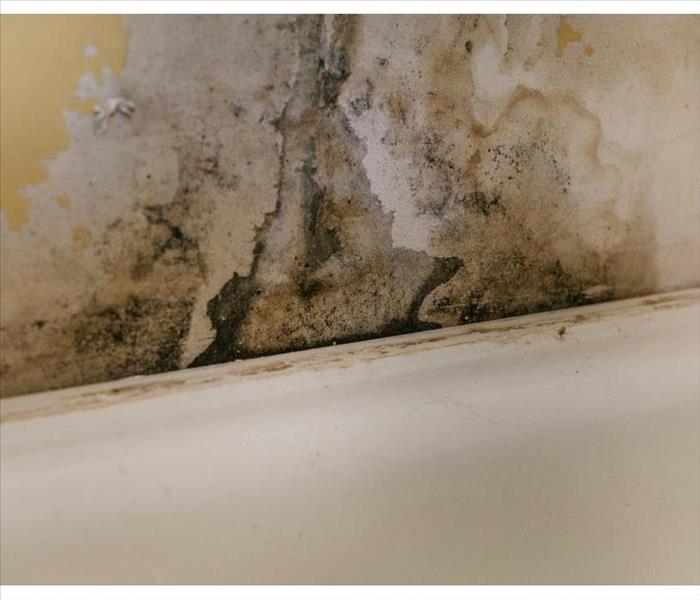 Mold growth on drywall due to humidity.
Mold growth on drywall due to humidity.
Three Facts About Mold
Strong storms in Chandler, AZ, can wreak havoc on your property, but few problems are as difficult to deal with as flooding. One major issue these storms can lead behind is mold growth, which can occur in any area affected by floodwater. The more you know about mold, the better you can recognize its presence after a flood and take steps to fight it.
1. Black Mold Is Common With Moisture Damage
While mold comes in many forms, black mold is usually the most common type that invades after a flood. Mold spores that exist naturally in the air are attracted to standing water, and the longer the moisture remains, the more likely mold will form, as it only requires humidity and moist conditions to grow.
2. Mold Grows Quickly
Mold growth usually occurs quickly after a flood, usually within 24-48 hours of the initial incident. It may form even faster in areas of high humidity or in humid weather. It tends to grow faster on porous surfaces, such as drywall, and may even affect areas you cannot see, such as in crawlspaces or behind walls. You may be able to slow this growth until you can call for assistance by opening windows in rooms where mold is growing or by using ceiling or electric fans to circulate the air.
3. Mold Contains Bacteria
Handling any kind of mold that appears after a flood can be dangerous because of the bacterium that it contains. Bleach and other water-based cleansers do not clear it away completely and may only encourage it to grow again because of the moisture levels these products contain. Calling in a flood mitigation and cleanup service is a wise option as opposed to do-it-yourself procedures that may not clear away mold completely.
When flooding strikes your Chandler, AZ, home and mold growth occurs, the results can be difficult to handle. knowing what causes mold and how to eliminate it can help you act quickly in the wake of a flood.


 24/7 Emergency Service
24/7 Emergency Service





